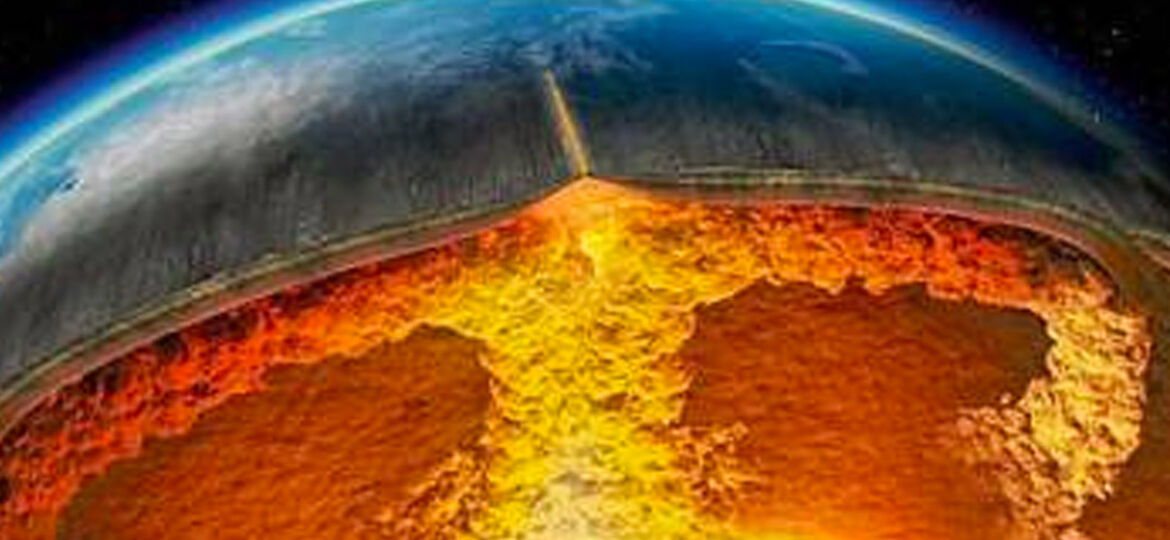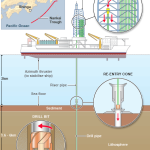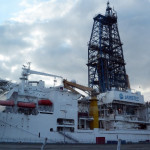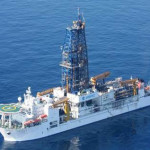
WHY THIS MATTERS IN BRIEF
Being able to drill through the the Earth’s mantle will not only help us predict earthquakes better, but it will also give us a complete record of the formation of Earth.
Last week a team of Japanese scientists, backed by the Japanese government, announced that they’re going to drill the world’s deepest hole, which will be even deeper than Iceland’s new Geothermal Deep Drilling Project, and attempt to drill through the Earth’s crust to reach the Earth’s mantle.
The major initiative would be a first for humankind.
Despite multiple previous attempts and multiple boreholes no one has ever managed to drill far enough to see what lies beneath the Earth’s rocky crust, instead, our knowledge of the mantle is mostly based on indirect observations, like the speed at which seismic waves propagate through the planet’s internal geometry.
In 2007 an investigation into a unique area between Cape Verde and the Caribbean Sea, where the crust of the Earth is missing and the mantle is directly exposed, yielded some fascinating rock samples and scientific data, but it’s thought that all of this data will pale in comparison to what the researchers will find if they actually manage to reach the mantle.
The new project, which will be led by the Japan agency for Marine-Earth Science and Technology (JAMSTEC), will begin by conducting a two week study off the coast of Hawaii next month, and if that location isn’t suitable, then they plan to investigate the areas off the shores off Costa Rica and Mexico.
Three drilling sites are under consideration, all of them in the Pacific Ocean.
“One is off Hawaii – we’re going to survey there – another one is off Costa Rica, (and) the last one is off Mexico,” said Natuse Abe who’s heading up the project.
To access the mantle, the agency wants to use one of the most advanced drilling vessels currently available, the Chikyu.
“It’s the biggest drilling ship of our science area, so the drilling capability is three times longer, or deeper, than the previous (vessels),” Abe said.
All of the drilling sites are in the ocean because the Earth’s crust is roughly twice as thick on land as it is over water, but even so, this is no small task. The teams drill will have to pass through 2.5 miles of water and a staggering 3.7 miles of crust to reach the mantle. And while we already know that the mantle has a higher ratio of magnesium to iron than the Earth’s crust, but less silicon and aluminium, not much else is known about its chemistry.
As a consequence the team have loads of questions they’d like answered, such as how hot spot formation relates to earthquakes and volcanic eruptions on the Earth’s surface, how convection currents interact with tectonic plates, and how the mantle can apparently suffer its own earthquakes at depths of 250 to 420 miles.
The Japanese government is helping to fund the expedition, in part because it has a vested interest in trying to better understand earthquakes, but the team is also hoping to investigate interactions between the crust and mantle to understand how the planet’s crust formed in the first place, and to determine exactly how deep within the Earth microbial life can exist.
The Japanese team hopes to begin drilling by the early 2020s and the site surveys aren’t the only important issue that need addressing, the team will have to test the six kilometre drill pipe they plans on using, and no doubt the Japanese may be hoping to find other nations interested in helping to bankroll the project.




















